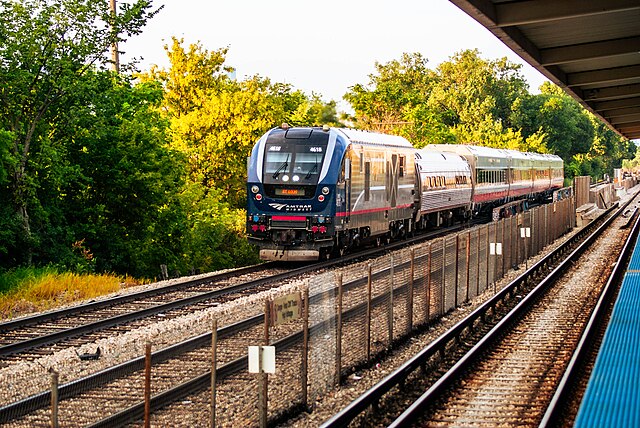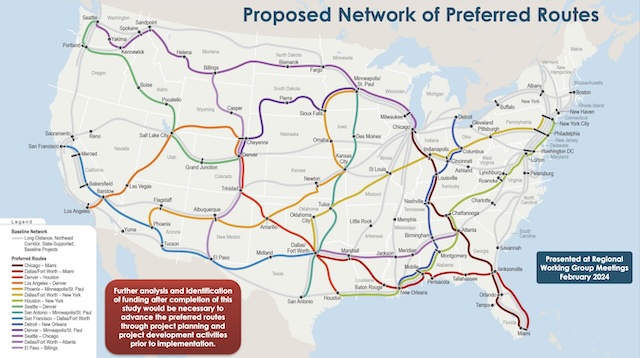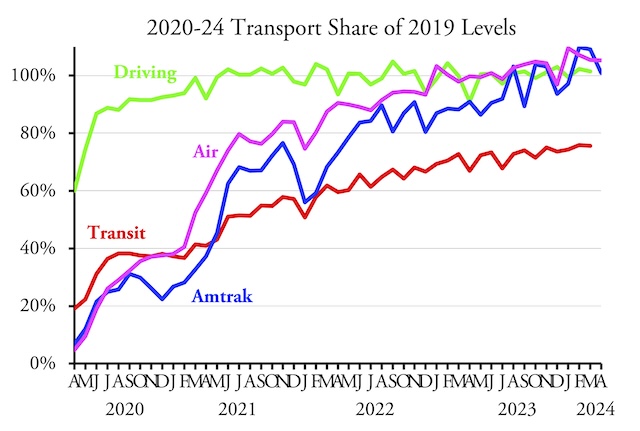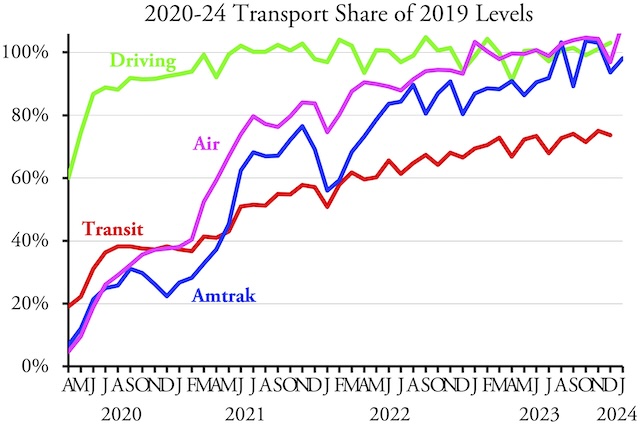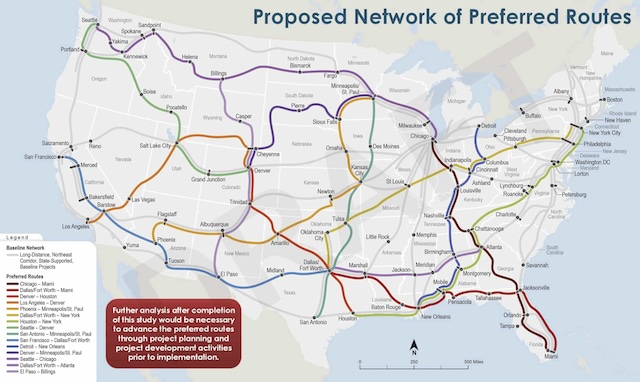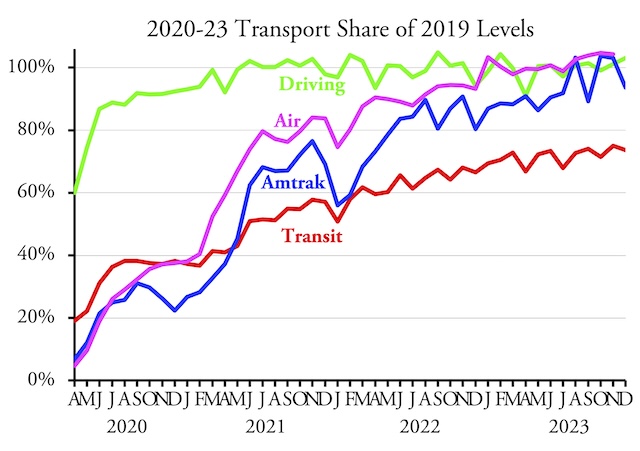“A Slow Path to Higher Speeds” fills ten pages of the September issue of Trains magazine to tell why it took Illinois 14 years to speed up passenger trains on the Chicago-St. Louis route. Originally funded by the Obama administration in 2009, the project was supposed to increase top speeds from 79 to 110 miles per hour. But top speeds aren’t average speeds, which increased only 5 miles per hour from 50 to 55. The fastest train on the timetable ended up just shy of 60 mph, a 6-mph boost over the fastest train in 2009.
Part of the cost of the Illinois project was buying new locomotives and cars. Photo by Amy Lohrke.
When Illinois received $1.14 billion in high-speed rail funds from the Obama administration in 2009, it predicted that by 2015 it would shave an hour off of Chicago-St. Louis trip times and increase frequencies from five to eight trains per day, which in turn would stimulate a 130 percent increase in ridership. But speeds and frequencies remained unchanged through early 2023. Finally, after spending $1.95 billion, speeds increased on June 26, 2023, but average trip times declined by only about a half an hour, while the number of trains per day remained unchanged at five. Continue reading

